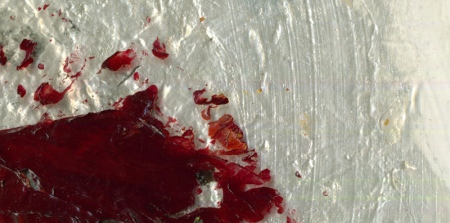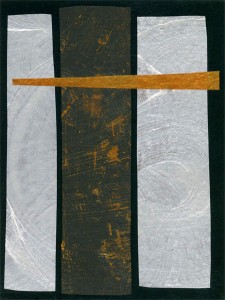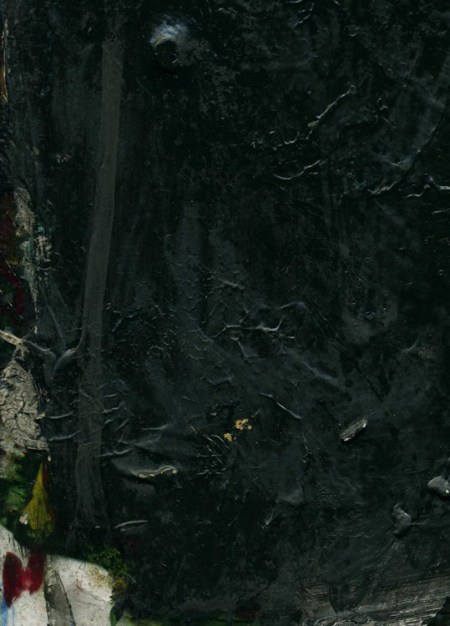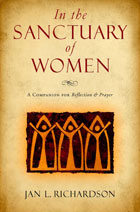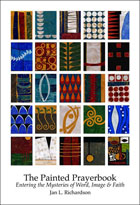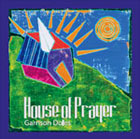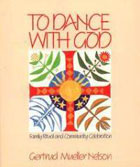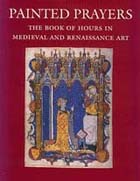Image: Therefore I Will Hope © Jan Richardson
“The Lord is my portion,” says my soul,
“therefore I will hope in God.”
—Lamentations 3.24
From a lectionary reading for Holy Saturday: Lamentations 3.1-9, 19-24
Reflection for Saturday, April 7 (Holy Saturday/Day 40 of Lent)
I’m so taken with the way that, like those who composed the book of Psalms, the author of Lamentations—which tradition held to be the prophet Jeremiah—is able to hold seemingly conflicting emotions at once. Today’s reading consists primarily of—well, you can tell from the title of the book—a lamentation, stunning and suffocating in the way it describes the author’s sense of affliction and imprisonment. God has driven and brought me into darkness without any light, he wails; against me alone God turns a hand, again and again, all day long….God has made me sit in darkness like the dead of long ago. God has walled me about so that I cannot escape.
Though afflicted by destruction, the author of the lament cannot manage to sustain his despair for long. But this I call to mind, he cries out as the lament turns just before its end; and therefore I have hope: The steadfast love of the Lord never ceases, God’s mercies never come to an end; they are new every morning.
Though composed as a lament for the destruction of the Temple and the city of Jerusalem in 586 BCE, one can well imagine why these words came to be associated with Christ in the tomb. Christ, who referred to himself as the Temple, now brought to death and seeming destruction; Christ in the darkness without any light.
In another lectionary passage for Holy Saturday, we read of how, after Joseph of Arimathea places Jesus’ body in the tomb and rolls a stone across the entrance, “Mary Magdalene and the other Mary were there, sitting opposite the tomb” (Matthew 27.61). I wonder if these words from Lamentations came to them in their waiting. In the darkness, in their sorrow, with no evident cause for rejoicing, did they, like the author of Lamentations, yet find cause for hope?
On this day—this last, final day of Lent—it may be tempting to skip ahead to what awaits us on Sunday, without giving Holy Saturday its due. We know the rest of the story. Yet how might it be to linger with these words of lamentation, as if we did not know? What if we sat ourselves down with the women opposite the tomb, and listened to their grief and longing, and waited with them? When times of darkness come in our own lives, and we don’t know the rest of the story, how does what God has done for us in the past give us cause to hope for what God will yet do?
Therefore I Will Hope
A Blessing for Holy Saturday
I have no cause
to linger beside
this place of death,
no reason
to keep vigil
where life has left,
and yet I cannot go,
cannot bring myself
to cleave myself
from here,
can only pray
that this waiting
might yet be a blessing
and this grieving
yet a blessing
and this stone
yet a blessing
and this silence
yet a blessing
still.
—Jan Richardson
2016 update: The blessing “Therefore I Will Hope” appears in my new book, Circle of Grace: A Book of Blessings for the Seasons.
This reflection is part of the series Teach Me Your Paths: A Pilgrimage into Lent.
For previous reflections for Holy Saturday, click the images or titles below.

Holy Saturday: The Art of Enduring
[To use the image “Therefore I Will Hope,” please visit this page at janrichardsonimages.com. Your use of janrichardsonimages.com helps make the ministry of The Painted Prayerbook possible. Thank you!]


